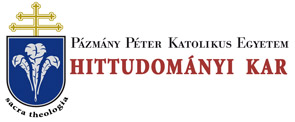Folia Theologica et Canonica, Supplementum (2016)
Hanns Engelhardt, Marriage and Divorce In Anglican Canon Law
52 HANNS ENGELHARDT man’s innocency, signifying unto us the mystical union that is betwixt Christ and his Church; which holy estate Christ adorned and beautified with his presence, and the first miracle that he wrought in Cana of Galilee; (...). First, It was ordained for the procreation of children, to be brought up in the fear and nurture of the Lord, and to the praise of his holy Name. Secondly, It was ordained for a remedy against sin and to avoid fornication; that such persons as have not the gift of continency might marry, and keep themselves undefiled members of Christ’s body. Thirdly, It was ordained for the mutual society, help, and comfort, that the one ought to have from the other, both in prosperity and adversity. The BCP of the Episcopal Church of 1979, in the same place, is in agreement with the old English books as for the first part, but then continues: The union of husband and wife in heart, body, and mind is intended by God for their mutual joy; for the help and comfort given one another in prosperity and adversity; and, when it is God's will, for the procreation of children and their nurture in the knowledge and love of the Lord. These are general principles which express the mind of the Church but not immediately applicable law. What the law permits or prohibits is to be taken from the canons and the mandatory liturgical rules. III. Sources 1. England The Henrician Reform - which term I prefer to the term “Reformation” because the nature of this reform is basically different from the Continental Reformation7 8 - of the 16lh century did not fundamentally interrupt the continuity of the development of English canon law. It is true that in the framework of this Reform an attempt was made to set up a code of canons and thereby to replace all earlier canon law. For this purpose the Submission of the Clergy Act of 1533s already empowered the king to appoint a commission of 32 persons to review all the earlier canon law and to adjudge what was deemed “worthy to be continued, kept, and obeyed” from thenceforth. But the last paragraph of the act added the proviso; 7 Cf. e.g., Thompson, J. V. P„ Supreme Governor A Study of Elizabethan Ecclesiastical Policy and Circumstance, London 1940 [year according to William P. Haugaard, Elizabeth and the English Reformation, 20081 1 ■ 8 25 Henry Ville. 19.
